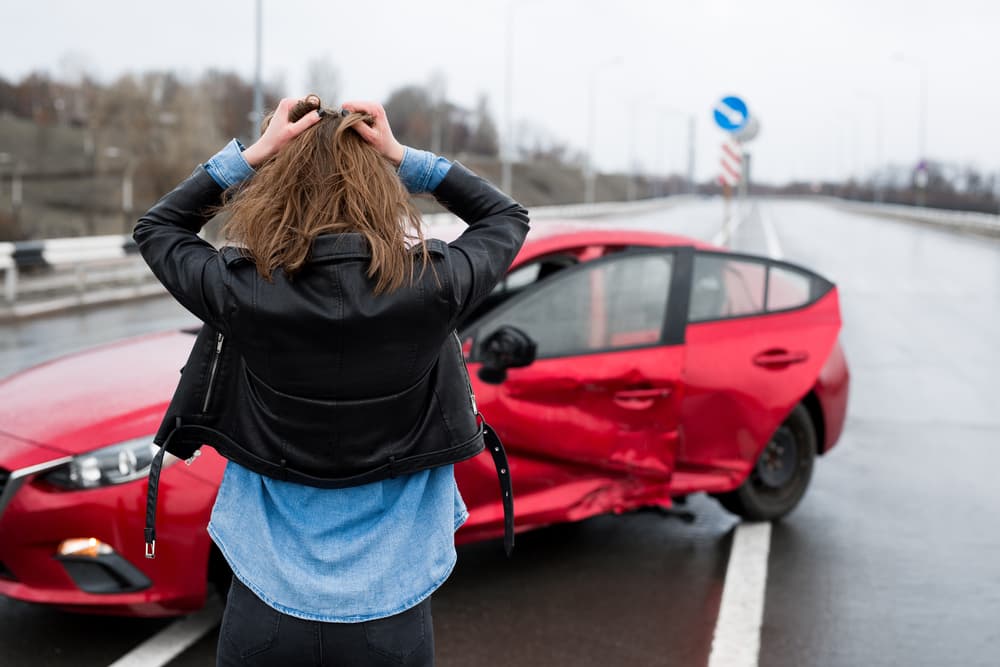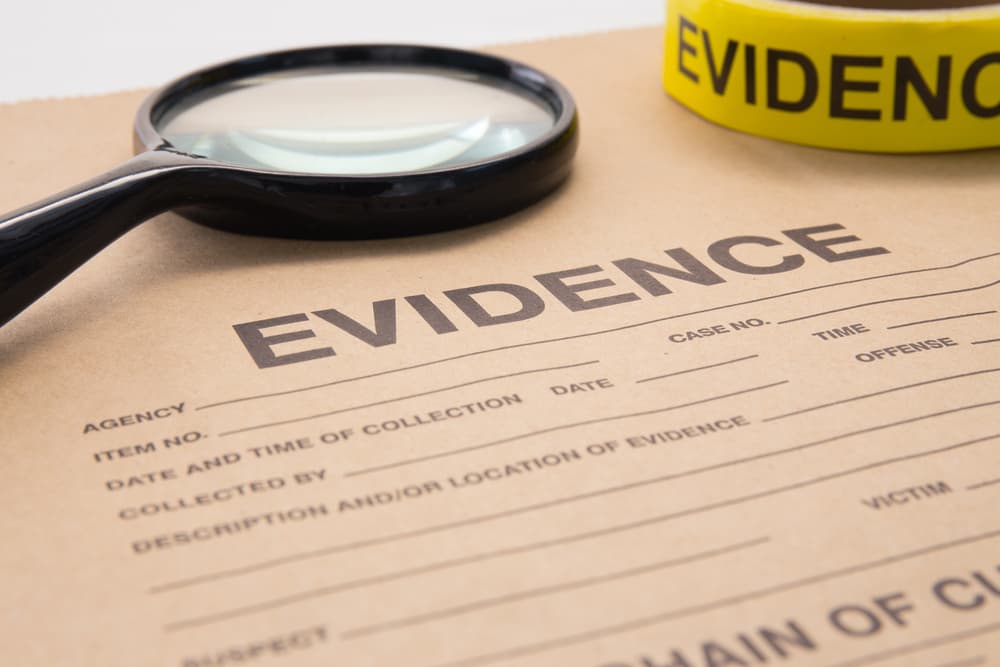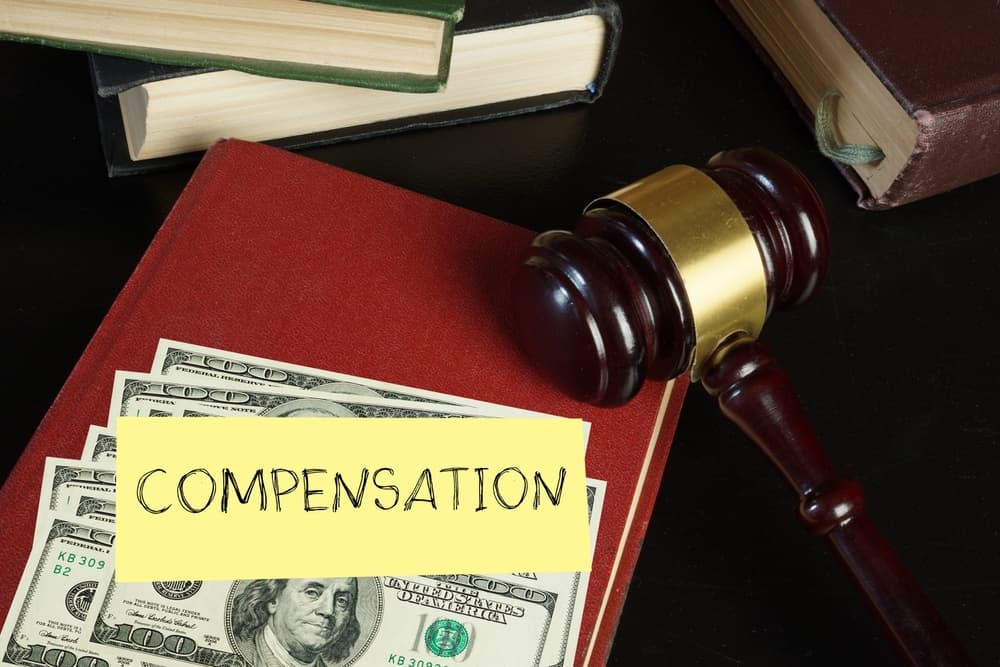Getting sideswiped by another vehicle can feel like it came out of nowhere, because it usually does. You’re driving straight, staying in your lane, when suddenly another car veers too close and clips the side of your vehicle.
While some sideswipes are minor, others lead to major damage, serious injuries, unexpected medical bills, and other life-altering consequences. If you’re wondering what happens if you get sideswiped by another car, we’ll break down how these crashes occur and what you may do afterward to protect yourself legally, physically, and financially.
Schedule Your Free Consultation
Key Takeaways
- Sideswipe accidents occur when two vehicles traveling in the same or opposite direction make side-to-side contact.
- Common causes include unsafe lane changes, merging without checking blind spots, and drifting out of a lane.
- Injuries from sideswipe accidents may range from mild to severe, including whiplash, broken bones, and traumatic brain injuries.
- Insurance companies may try to undervalue your claim or argue you were partially at fault to reduce payouts.
- If you’re sideswiped, you may preserve your claim by documenting the crash, seeking medical attention, and reporting the accident promptly.
- Compensation may cover medical bills, lost income, property damage, emotional distress, and other related expenses.
- An experienced car accident lawyer may help protect your interests, especially when the other driver denies fault or the insurer disputes your claim.
What Is a Sideswipe Collision?

A sideswipe collision happens when the side of one vehicle strikes or scrapes against the side of another. These accidents most often occur when drivers are traveling in the same direction, such as during lane changes on a highway or when merging into traffic. However, sideswipes can also occur when vehicles are moving in opposite directions, especially on narrow roads without a clear center divider.
Unlike head-on or rear-end crashes, the initial collision may not be violent. But that doesn’t mean it’s harmless. Even at low speeds, the impact can jolt your car, cause a loss of control, or push you into another lane, off the road, or into an obstruction.
Some common examples of sideswipe scenarios include:
- A driver merges onto a freeway without checking blind spots
- Someone veers into your lane while texting or distracted by something else
- A speeding vehicle attempts to pass too closely on a two-lane road
- A driver fails to yield during a multi-lane turn at an intersection
In most cases, one vehicle crosses into another’s lane without ensuring it is clear and safe to do so.
What Causes Sideswipe Accidents?
Sideswipe crashes almost always result from driver error. These are typically avoidable incidents that occur when someone is careless, distracted, or misjudges space and speed. Here are the most common contributing factors:
1. Unsafe Lane Changes
Many sideswipe accidents stem from drivers who fail to signal or check blind spots before switching lanes. Rushed or aggressive driving often plays a role here.
2. Distracted Driving
Looking down at a phone, adjusting the radio, or even talking to passengers can cause a driver to drift out of their lane unintentionally.
3. Driving Under the Influence
Alcohol or drug impairment affects judgment, reaction time, and coordination, making sideswipes more likely, especially at night.
4. Drowsy Driving
Fatigue can have similar effects to intoxication. A tired driver may nod off briefly, causing the vehicle to veer into an adjacent lane.
5. Road Conditions or Mechanical Failures
Sometimes potholes, construction zones, or tire blowouts cause a vehicle to swerve suddenly and sideswipe another car.
Even when external factors play a role, liability often falls on the driver who lost control or failed to take precautions.
Injuries You Might Suffer in a Sideswipe
The physics of a sideswipe are different from other types of crashes. Instead of a direct impact from the front or back, the force hits from the side, often pushing the vehicle off course. The risk of rollover or secondary collisions can make these crashes dangerous.
Common injuries in sideswipe collisions include:
- Head injuries – When a sideswipe leads to a secondary crash or abrupt swerve, victims may hit their head on a window, headrest, or side pillar. This can result in concussions or more serious traumatic brain injuries (TBIs), sometimes with long-term cognitive or emotional effects.
- Whiplash and soft tissue injuries – The lateral jolt can cause the neck and upper spine to twist sharply, often leading to strains, sprains, or whiplash. These injuries may take days to fully surface.
- Fractures and broken bones – Arms, ribs, shoulders, and clavicles are especially vulnerable in side-impact crashes. The force from door intrusion or bracing for impact can easily lead to fractures.
- Spinal cord injuries – The sideways momentum can put torsional stress on the back and spine, resulting in herniated discs or other spinal trauma that may require long-term therapy or surgery.
- Blunt force trauma – When a collision forces the body against the door frame, seatbelt, or another object inside the vehicle, it can result in severe bruising, internal injuries, or crushed tissue.
- Internal bleeding and organ damage – Even without external injuries, the impact from a sideswipe may rupture blood vessels or damage internal organs such as the liver, spleen, or kidneys. These injuries may be life-threatening if not detected promptly.
- Joint and extremity injuries – Knees, hips, elbows, and wrists often bear the brunt of bracing motions during the crash. Dislocations, cartilage tears, and bruising are common.
- Lacerations and burns – Broken glass, crumpled metal, or deployed airbags may lead to cuts, abrasions, or chemical burns.
It’s not uncommon for symptoms to worsen over time, which is why seeking immediate medical care is essential, even if you initially feel “okay.” The sooner your injuries are evaluated and documented, the better the better your position for recovery and pursuing a potential claim.
Who Is at Fault in a Sideswipe Accident?
Establishing fault in a sideswipe collision often comes down to proving one driver failed to maintain their lane. In general, the driver who left their lane of travel without properly checking for vehicles may be considered legally liable. However, insurance companies may not accept blame easily.

Evidence that may help establish fault include:
- Dash cam footage showing the lane change or drift
- Video surveillance footage
- Skid marks and vehicle positioning
- Witness statements
- Police accident reports
- Paint transfer or scrape marks consistent with one vehicle moving sideways
It’s also possible for both drivers to share some degree of fault. Every state has a system in place for assigning fault in an accident, which affects the amount of compensation the victim may receive. For example,
- Ohio uses a modified comparative fault rule: You may recover compensation if you are less than 51% at fault, but your damages may be reduced based on your percentage of blame.
- Kentucky follows a pure comparative fault rule: You may recover damages even if you’re mostly at fault, but your compensation will be reduced accordingly.
In either state, accurate documentation is critical.
What to Do After You’ve Been Sideswiped
If a negligent driver injured you in a sideswipe accident, you’ve likely already received medical attention or are in the process of being treated. That’s the right move. Some injuries don’t show symptoms right away, and delaying care could affect your physical recovery and your legal options.
If you haven’t received a medical evaluation yet, you should do so immediately if you plan to take legal action. A record of no medical treatment does not support a claim for damages.
In addition to receiving medical care, there are other important steps to help protect your injury claim and strengthen your case moving forward:
- Hire a lawyer – An experienced car accident attorney may help you gather evidence, handle the insurance company, and pursue maximum compensation while you focus on healing.
- Keep all medical appointments and follow your treatment plan – Skipping care or failing to follow through with referrals or therapy gives insurance companies ammunition to argue your injuries aren’t serious.
- Write or record a journal of your recovery – Document how the crash has affected your daily life, including your pain levels, mobility, emotional state, and how your injuries have changed routines like sleeping, working, or caring for your family.
- Save all accident-related records – including medical bills, prescriptions, repair estimates, and communications with insurers.
- Avoid discussing the accident on social media – Posts, photos, or check-ins may be used out of context to undermine your case.
Taking the right actions early on may make a significant difference in how your claim is valued and resolved.
Dealing With Insurance After a Sideswipe Accident
Once the accident scene is cleared and the dust settles, the insurance claims process begins, but it’s rarely straightforward. Whether you’re dealing with your own insurance provider or the other driver’s, be prepared for scrutiny.
Insurance companies often minimize payouts by:
- Pressuring you to accept a lowball settlement quickly
- Arguing that your injuries were pre-existing or unrelated
- Disputing fault, especially in lane-change scenarios
- Claiming the damage wasn’t significant enough to cause injury
They may request a recorded statement soon after the crash. If this happens, remember: you have the right to delay until you've received legal advice. Saying the wrong thing, no matter how innocent, may be used to reduce your compensation.
First-Party vs. Third-Party Claims
If the other driver is clearly at fault, you might file a third-party claim with their insurer. But if liability is disputed or the other driver is uninsured, you may need to rely on your own coverage. This could include:
- Collision coverage for vehicle repairs
- Uninsured/underinsured motorist coverage for bodily injury
- Medical payments coverage (MedPay) in states like Kentucky
In both Ohio and Kentucky, drivers are legally required to carry liability insurance, but minimum coverage may not stretch far if your injuries are serious.
Can You Recover Compensation After a Sideswipe?
Yes, if the other driver was at fault or mostly at fault, you may seek compensation through an insurance claim or a personal injury lawsuit. Even if you share some of the blame, comparative fault rules in both Ohio and Kentucky still allow partial recovery.
Common types of damages in sideswipe claims:

- Medical expenses (past, present, and future)
- Lost wages
- Diminished earning capacity
- Pain and suffering
- Property damage
- Emotional distress or mental anguish
- Loss of enjoyment of life
If the sideswipe resulted in a fatality, the family may pursue a wrongful death claim for funeral costs, loss of companionship, and more.
The amount of compensation available depends on factors like the severity of your injuries, the clarity of fault, and whether you sought timely medical care.
Why Liability Is Complicated in Sideswipe Cases
Sideswipe collisions can be tricky because both drivers were often moving when the impact occurred. There might not be obvious damage patterns like those in a rear-end crash. And sometimes both parties claim the other left their lane.
This is where evidence becomes essential. Dash cams, eyewitnesses, and black box data may help reconstruct what happened. If you’re being blamed for something you didn’t do, you might need help gathering and presenting evidence clearly and effectively.
Even if the insurance company agrees their driver was at fault, they may still dispute how much your injuries are worth. That’s when negotiations often stall, and legal representation becomes essential.
When Might You Need a Lawyer?
You’re not legally required to hire a lawyer after a car accident, but doing so can significantly improve your outcome. A qualified personal injury attorney may help you:
- Investigate fault and gather strong evidence
- Work with medical experts to document injuries
- Calculate the full value of your losses
- Communicate with insurance companies on your behalf
- Avoid common pitfalls like recorded statements and rushed settlements
- File a lawsuit if the insurance company refuses to be fair
In many sideswipe cases, the other driver denies fault or the insurer pushes back. An attorney may level the playing field by advocating for your interests from the start.
How Long Do You Have to File a Car Accident Claim?
Statutes of limitations vary by state. If you miss the deadline, your right to seek compensation may expire.
- In Ohio, you generally have two years from the date of the crash to file a personal injury lawsuit.
- In Kentucky, the statute of limitations is one year for personal injury claims and two years for property damage claims.
However, insurance companies may impose shorter internal deadlines for reporting the accident, so don’t put off seeking help from a trusted personal injury lawyer.
Can a Sideswipe Total Your Vehicle?
It depends on the force of the impact and the value of your car. Even a seemingly minor sideswipe may result in extensive body damage. In some cases, repairing the vehicle might cost more than it's worth.
Insurance companies may declare your car a total loss if:
- Repair costs exceed a certain percentage of the vehicle’s value (typically 70%–80%)
- There is structural or frame damage
- Safety features such as airbags have been deployed
If your vehicle is declared totaled, you may be entitled to its actual cash value, not the amount you still owe or paid originally.
Talk to a Personal Injury Lawyer About Your Sideswipe Case
A sideswipe crash may last just seconds, but the consequences can last for months or even years. Medical bills, lost work, and a growing pile of insurance forms can leave you feeling buried. And when the other driver denies responsibility or the insurance company downplays your injuries, it’s not just frustrating—it’s personal.
At O’Connor, Acciani & Levy, we understand what you're up against because we've helped thousands of people just like you. When you reach out to us, you won't get shuffled into a call queue or handed off to someone who doesn't know your story. You’ll speak with a team that takes your case and your recovery seriously.
We’ve spent more than two decades standing up to big insurance and holding negligent drivers accountable throughout Ohio and Kentucky with proven results. Whether your crash happened in Cincinnati or Columbus, Ohio, Florence or Westminster, Kentucky, or anywhere nearby, our lawyers are ready to listen, investigate, and fight for what you’re owed.
Call (513) 241-7111 for a free consultation. You won’t pay a dime unless we recover compensation for you. There are no upfront fees, and you pay nothing unless we recover money for you. It is worth your time to call us.